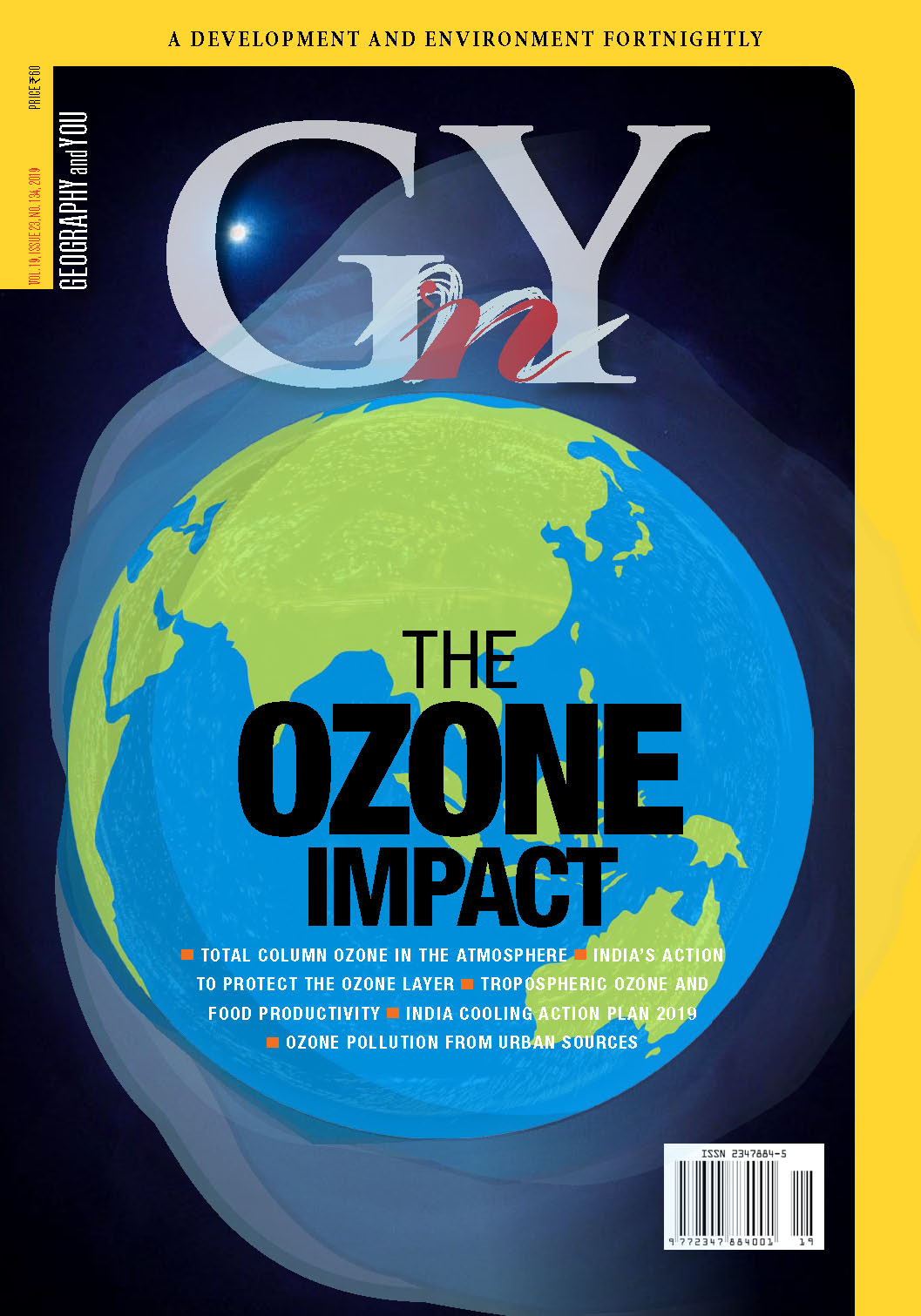
Inside this issue
STRATOSPHERIC OZONE
The Montreal Protocol and its amendments have played an important role in restricting the depletion of stratospheric ozone caused by anthropogenic ozone-depleting substances. The India Meteorological Department is monitoring the total column ozone, which shows that photochemistry is the dominant factor controlling its concentration. Research has also revealed that stratospheric ozone concentrations over different regions along the same latitude have varying recovery rates.
The global community adopted the Vienna Convention and the Montreal Protocol to protect the ozone layer and to phase out ozone depleting substances. India became party to both and complied with all control measures as per the 1993 Country Programme. India, as a follow up to the Kigali Amendment to the Montreal Protocol, launched the India Cooling Plan to enhance energy efficiency while addressing cooling demand.
REPORT WATCH
Penetration of airconditioning in the growing economy of India is low whereas the rising cooling requirements are both a challenge and an opportunity.
SURFACE OZONE
Ozone is life threatening if found to be increasing near the earth’s surface as it is toxic to life when inhaled. Ozone not only damages airways, but also reduces crop yields as well if it increases beyond the threshold levels. Worries are mounting as India marks a rate of increase of around 1 per cent each year. Anthropogenic sources of emissions are responsible for increase in surface ozone, which needs urgent control in the near future.
Surface ozone levels spiked during the summer of 2019 in Delhi. As ozone is harmful to crops and human health, this peculiar rise in its levels indicates a need to monitor ambient ozone levels over a longer period so as to put evidence-based control regulations in place.
POLAR REALM
Antarctica, a vast expanse of ice and land, harbours one of the most intriguing features under its ice—the subglacial lakes. These isolated lakes form a part of the basal hydrological system and conceal unique biological ecosystems and climate records,thus prompting more scientific missions along with numerous challenges.
Indo-China polar science research collaborations can be put in place constructively, with both the nations’ rising interest in the area.
In brief
Studies show that ozone pollution is harmful for crop production while ozone depletion is damaging for aquatic ecosystems. Emission of ozone depleting CFC-11 is on the rise in Eastern Asia.
Why ozone needs to be studied? Ozone is one of those insidious entities that can benefit and harm all at the same time. And, more importantly, being an outcome of secondary photochemical reactions, its presence or absence is controlled by myriad different substances that man has little control

